TEXT BY RAJITA BANERJEE
WITH INPUTS FROM GAUTAM MUKHARJI AND PIU CHATTERJEE
PHOTOGRAPHS BY AANCHAL MALHOTRA
Kolkata, West Bengal, India
We begin on a note that is perhaps a little unsettling to grapple with. The object that we discuss here is a saree: a luminous, dual-toned Banarasi. It is kept carefully folded and can be found in my mother’s almirah in Kolkata, resting amongst other sarees, mostly the old ones that hold meaning for us. But the dual-toned Banarasi saree’s history takes us back to a time period of more than a hundred years ago.
The saree once belonged to Tapati Rani Devya, my mother’s great-grandmother. She is a figure so distant from me in lineage, that I know only fragments of information that allow me to paint an incomplete picture of what her life might have looked like – She was born Tapati Banerjee, married at the age of eleven to a man named Ishan Chandra Mukherjee, who was thirty-two at the time, and had been married before. Working as a Revenue Minister in Jaipur, he was known as Hathibabu, a name that feels heavy and charismatic. There’s even a road named after him in the Pink city. Tapati, however, feels like a footnote easily looked over.
It is difficult to write about a marriage like that, to hold the dissonance between age and ritual, and it makes me think of how we continue to evolve as a society. In contemporary times, we talk about Bengali women as liberated individuals, those who refuse to be suppressed by the evils of a patriarchal society. My own grandmother too, was married before stepping into adulthood. In recent times, however, such practices are discouraged — both socially and legally. Yet, at the time when this saree was being woven in Banaras (present day Varanasi), the reality was less hopeful — especially for young girls.
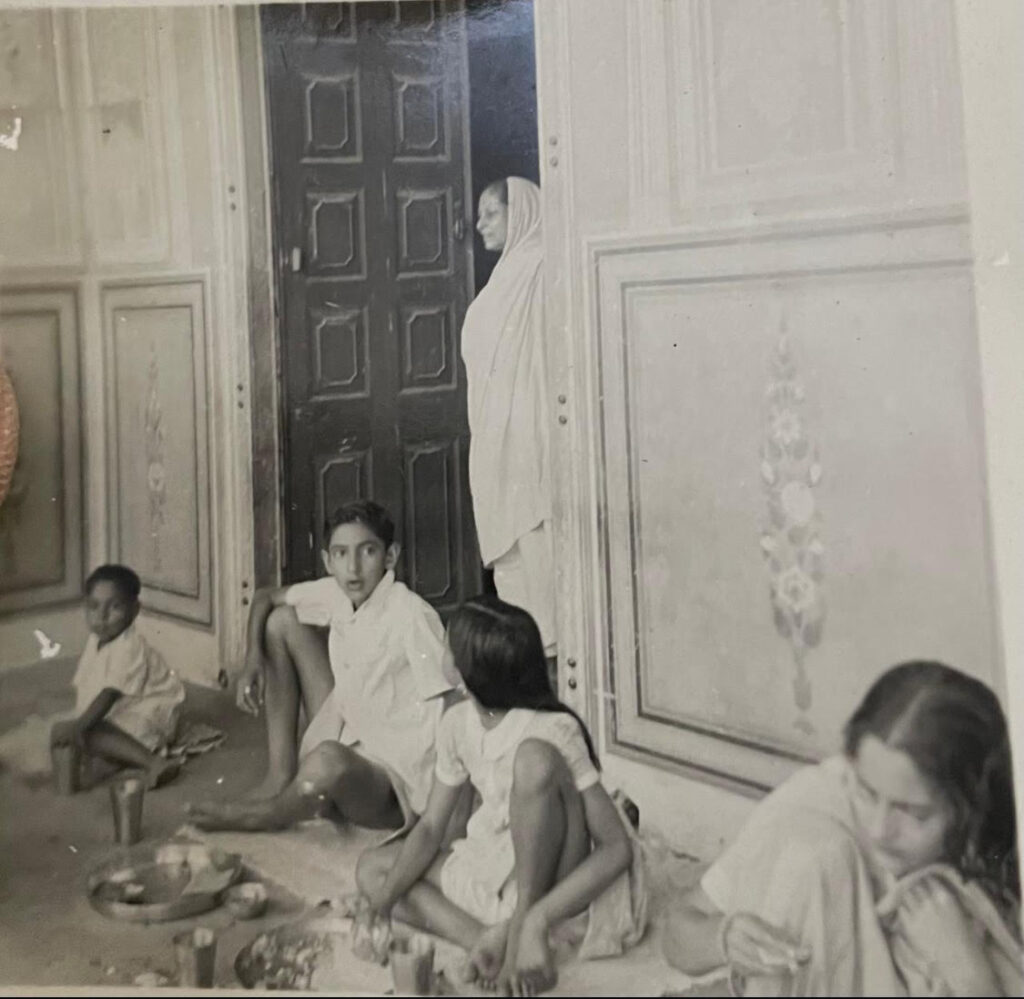
What do we do with the knowledge that a child became a bride? What do we inherit from women whose voices we never heard? Tapati was fondly referred to as Rangama, a term of endearment that was used in those days. In colloquial terms, ranga is a term that hints towards a fair complexion– something that Tapati had possessed. As I write this, I think of the complexities associated with using such terms of endearment, which in part, can be linked to colorism.
Tapati had four biological children– two sons, and two daughters, along with other step children. She was a witness to the death of her first son, which makes this story even more tragic. Then, when her husband passed, the law of primogeniture made things difficult for her – this system meant that Ishan Chandra’s eldest son from his aager pokkho (first marriage) inherited everything that belonged to his father. As a result, Tapati was left with a paltry sum of rupees 100 per month, in order to support herself. Her two sons were to receive a sum of seventy-five rupees on a monthly basis. As my mother and I gleaned from our conversation with our relative, Gautam Mukharji, nothing was left for the daughters.
Throughout her marriage, Tapati was used to a life of comfort, but one that was also heavily regulated by customs that prevented her from stepping out into the world, and knowing how to take care of herself. She had not known the challenges of being a matriarch, until she was forced to adapt to a life that was unknown to her. Following her husband’s death, she was subjected to neglect and hardship. Hers was a story of riches to rags, and she eventually passed away in 1982.
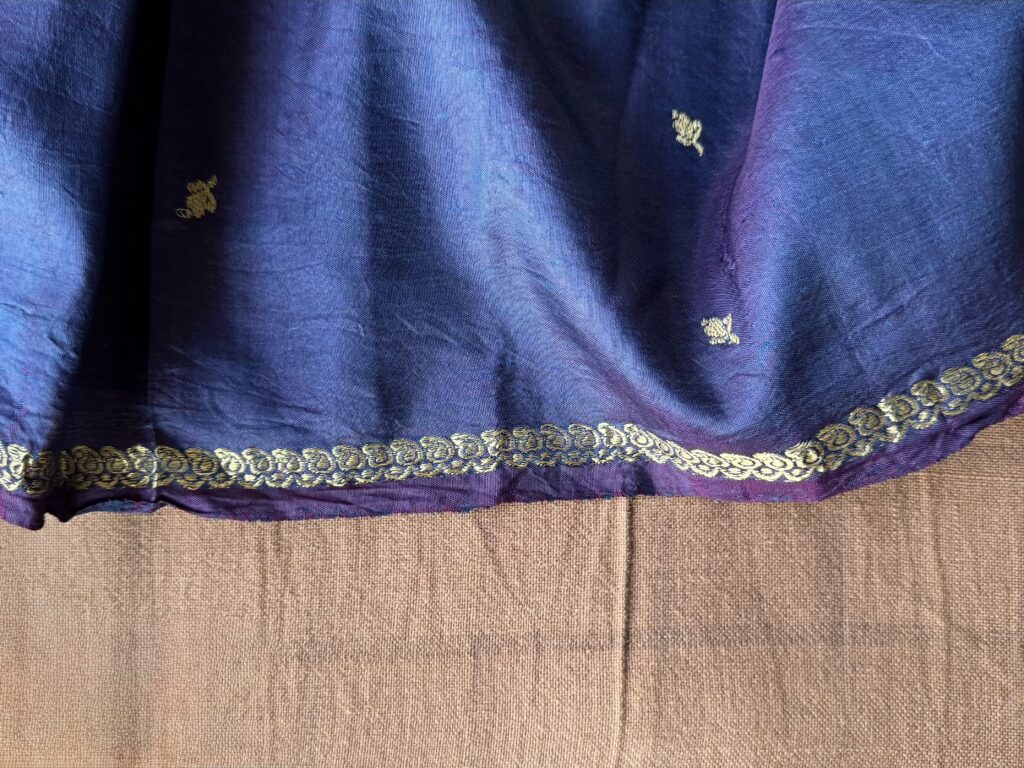
Among the items given to Tapati at the time of her wedding were five sarees, gifted from her parental home in keeping with custom of the bridal trousseau. For a long time, we believed that she lived in Kolkata prior to her marriage, when her home was actually in the city of Purnia, in present-day Bihar. The sarees came from Banaras — a city known for its ghats, temples, and exquisite weaves. These sarees, refined in craftsmanship, became ceremonial tokens: a symbol of familial duty, societal placement, and of womanhood itself. Over time, the five sarees were divided among Tapati’s descendants.
One of them found its way to us – the one I now see, occasionally, in my mother’s almirah. She has an early memory of wearing it to a wedding she attended in 1989. Its colors are hard to describe. At certain angles, it is a rich purple; at others, it shines teal or peacock green. The texture is soft but weighty, like time itself. This saree is what we would call a Mayur Konthi – named after the peacock’s neck, a phrase used to describe fabric with that elusive dual-tone shimmer.
The dual-toned saree also happens to be shorter in length than the sarees we wear today, a detail I find oddly intriguing. It gestures toward how bodies, and perhaps expectations, have changed with the passage of time. Perhaps the fabric was meant to fit a younger, smaller frame? Or were sarees simply woven shorter then? Either way, it marks a shift in silhouettes, of both garments and generations, for when I tried to drape the saree over my body, there wasn’t enough cloth that could go around my frame.
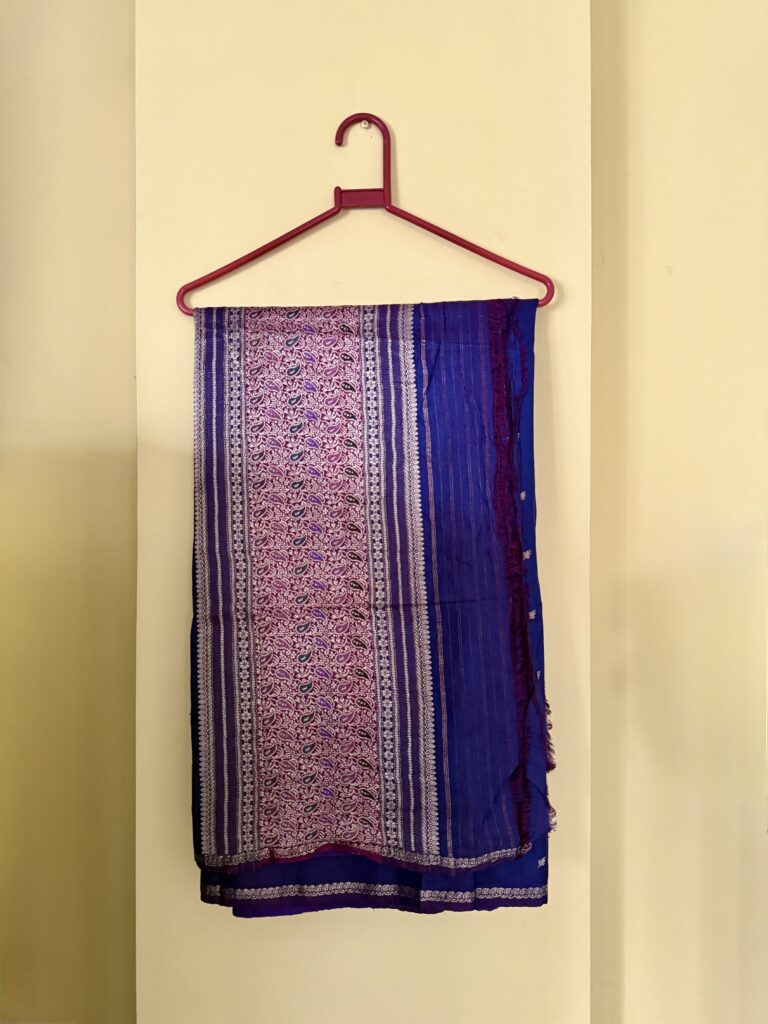
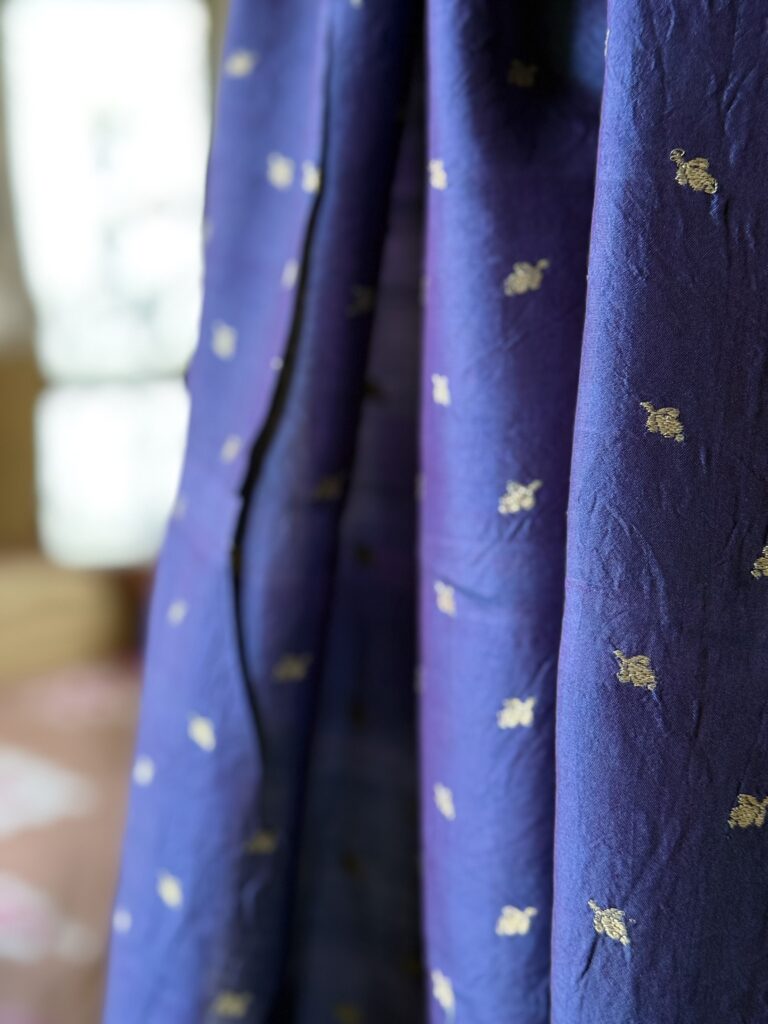
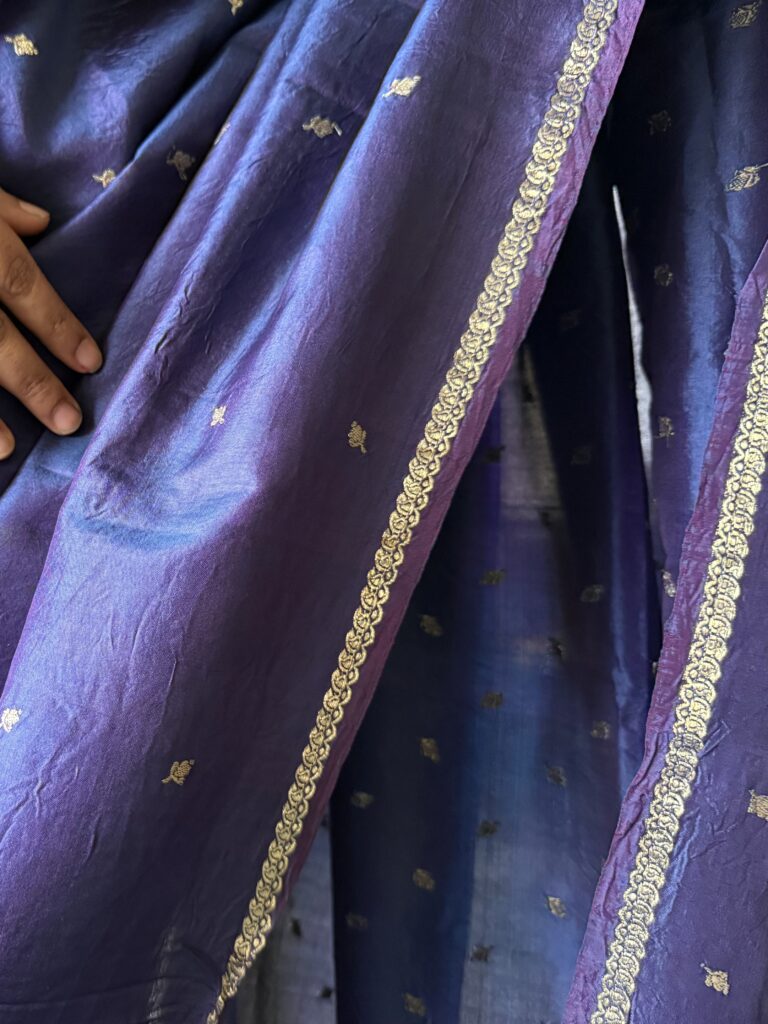

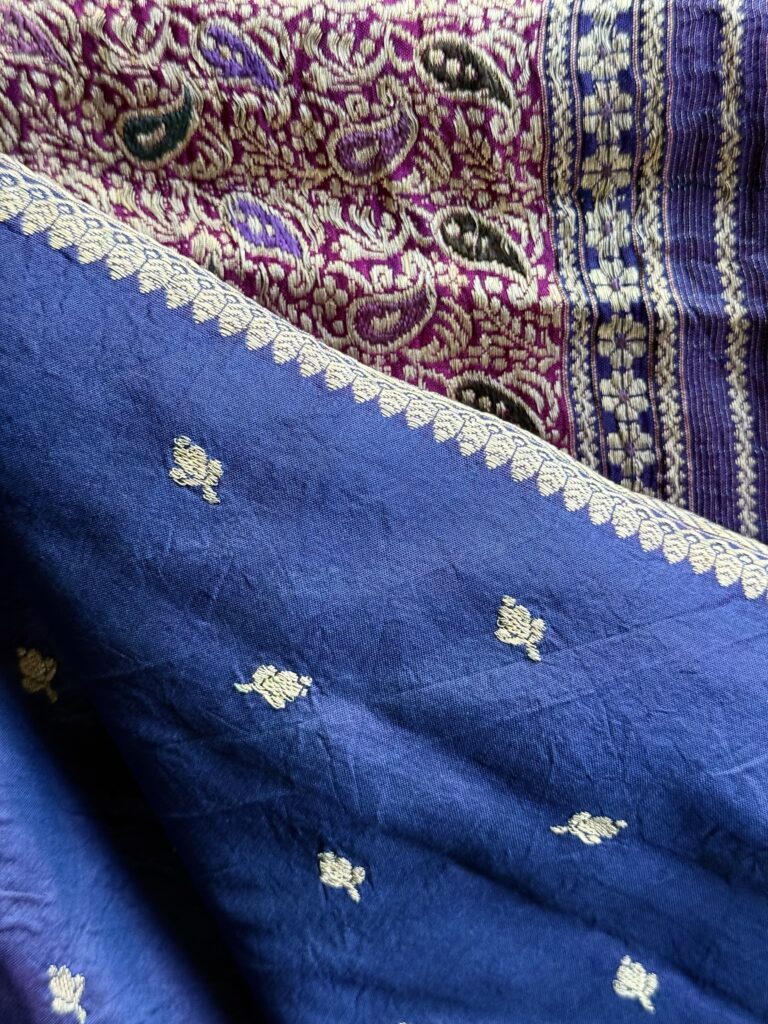
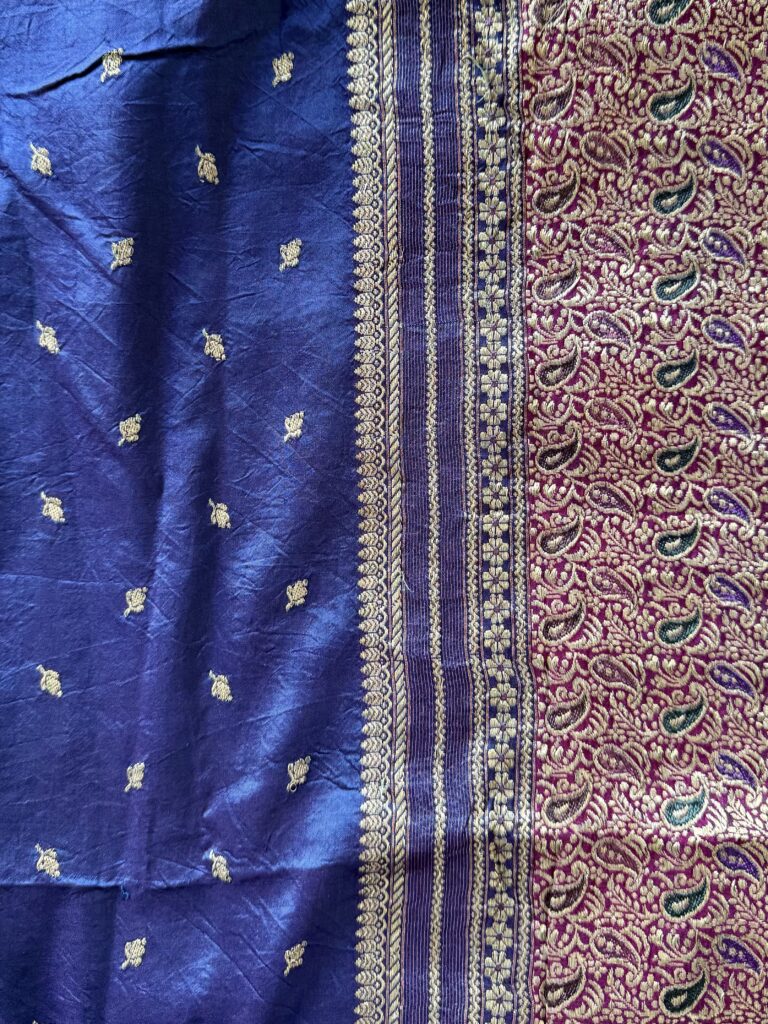
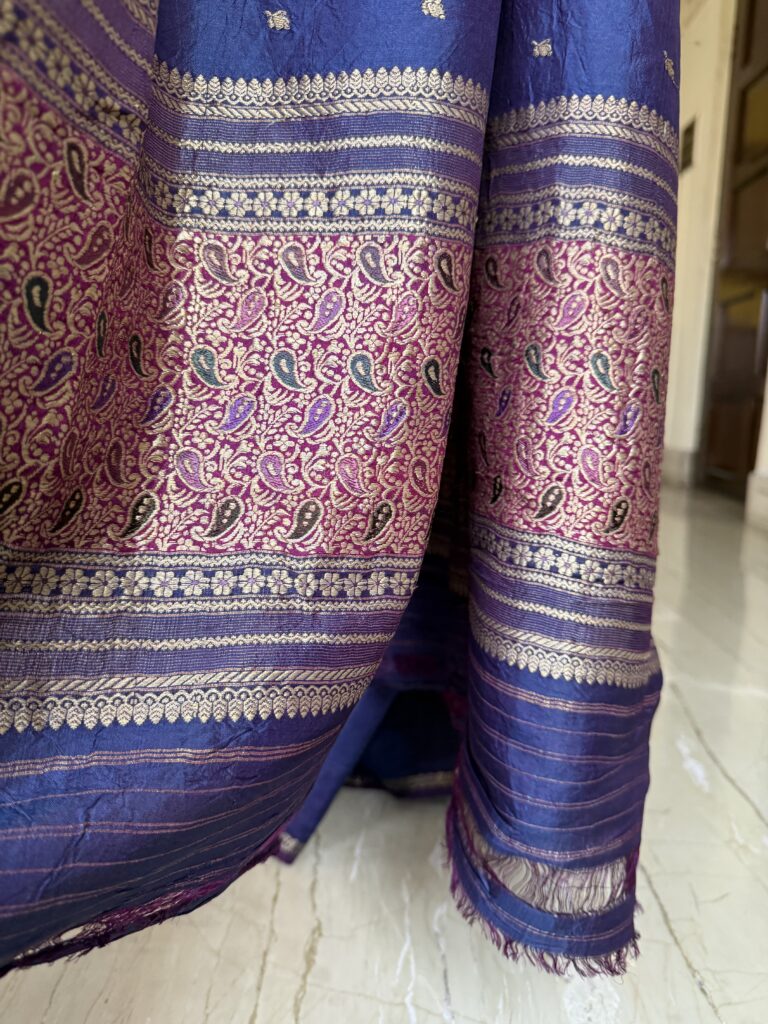

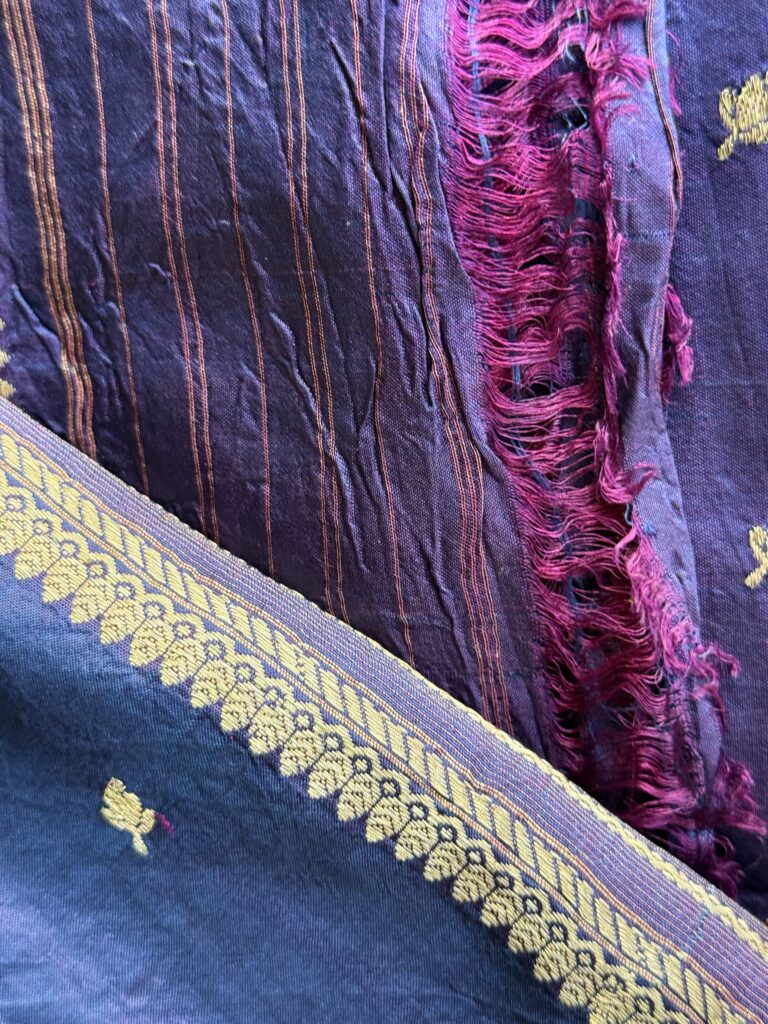
The saree is frayed at the edges now, its borders softened and slightly unraveled by time, as though the years have carefully worn down just its outer frame while leaving the rest untouched. The zari threads still gleam with astonishing clarity, their gold luster catching the light with the same defiant brilliance they must have held a century ago. Despite its age, it feels remarkable to me that the fabric is intact: rich in texture, vibrant in tone, and almost startling in its resilience.
Draped in the saree’s folds is a history I did not witness, a world of rituals that have faded from practice, and women whose voices I never heard, but whose choices and silences I have inherited. I often find myself pausing to imagine its early life – did Tapati wear it more than once, or was it carefully set aside, folded and refolded, its significance preserved in distance? Was it something she loved, touched often, or simply accepted as part of her entry into another household, another life – an object both intimate and imposed? This was a life that, after all, was chosen for her.
More than anything, it makes me reflect on what it means to inherit. Not just a piece of fabric, but a skin that carries a woman’s silence, her passage through child-marriage, motherhood, widowhood perhaps. After facing neglect at her marital home, she left for another abode with her children. Ishan Chandra had lived in a palatial establishment in Jaipur called Hathi Babu Ki Haveli. The doors were tall and wide – much like their namesake, the doorway was also meant to be large enough for literal haathis – elephants, to walk through. While Tapati was welcomed as a bride through these doors with pomp and ceremony, her exit was without show, grace or dignity.
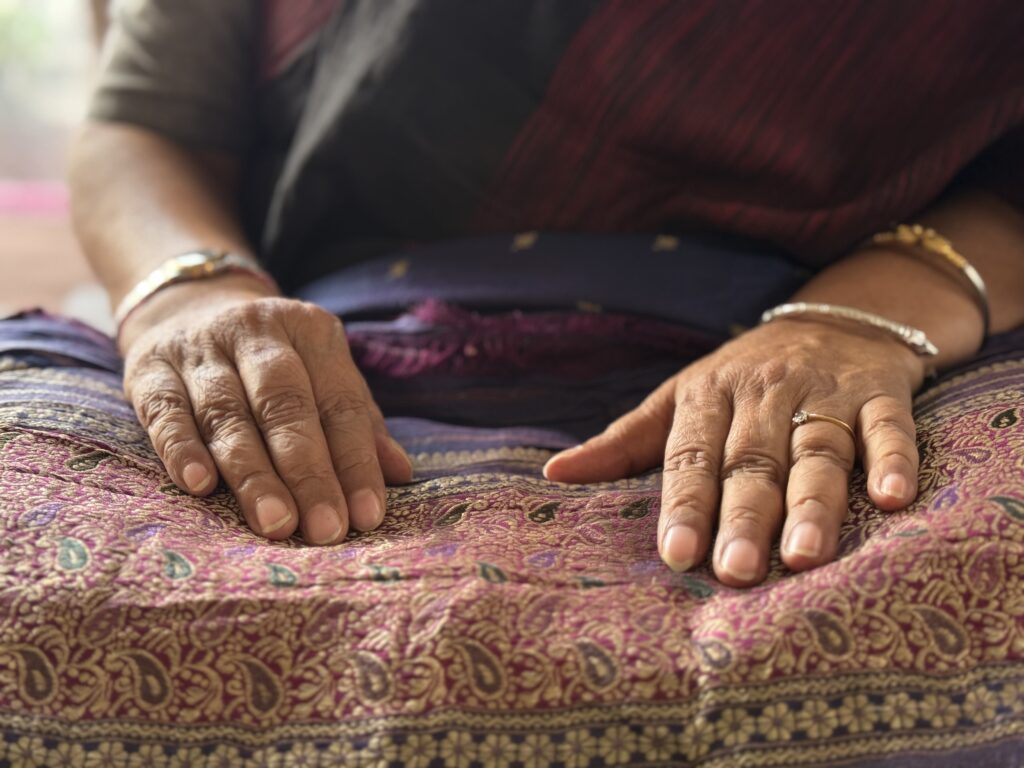
In 2022, my mother and I went to explore the mansion, and it turned out to be a misadventure as we were not received with grace either. Once we had walked past the main gate to enter the haveli, we soaked in the visuals of the place. It felt thrilling to do so, because we hadn’t rung the doorbell that would lead us inside the house. But we could take in the views of the courtyard and a few walls of the mansion. Our distant relatives who live in the house refused to let us in once we rang the doorbell.
In a picture sent to us by a distant relative which shows Tapati standing at a doorway, we see the same walls but in black and white. This uninvited visit to Haathi Babu’s Haveli was special to us because it was the same household, where my grandmother, Tapati’s granddaughter, had spent the first five years of her life.
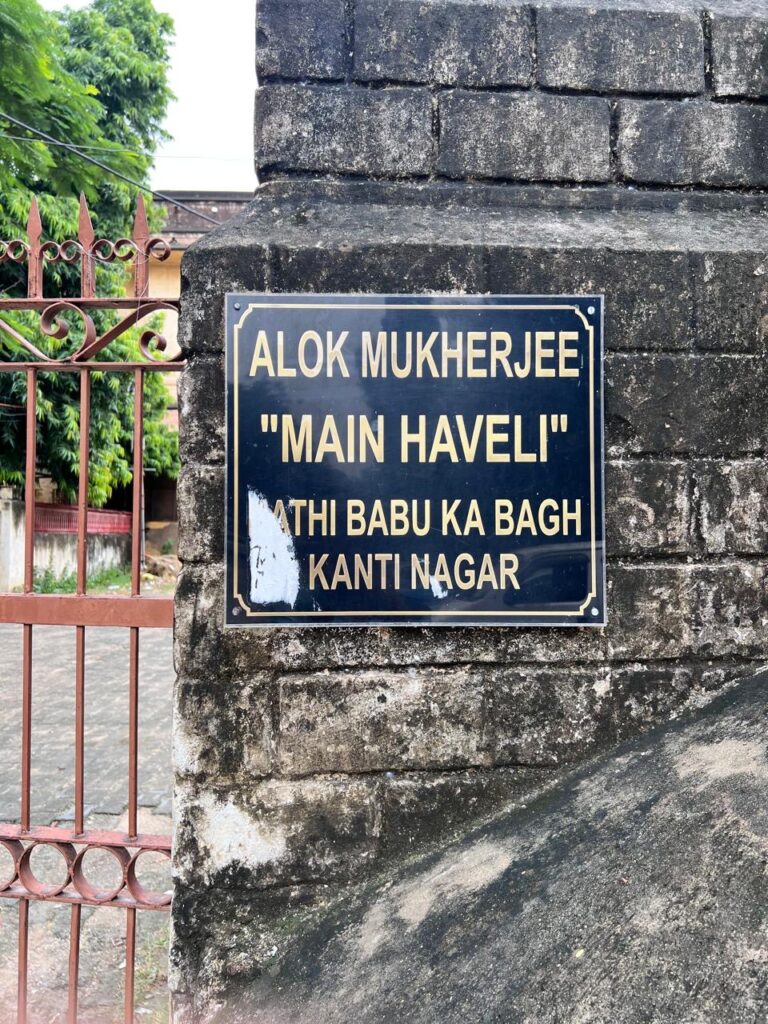
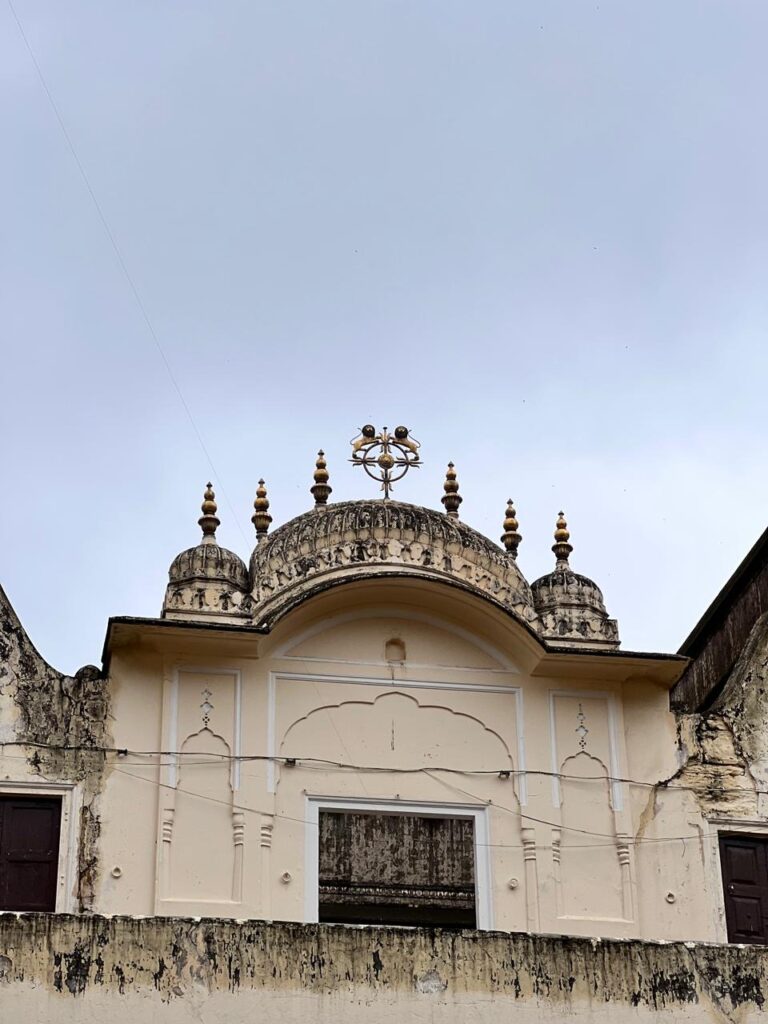
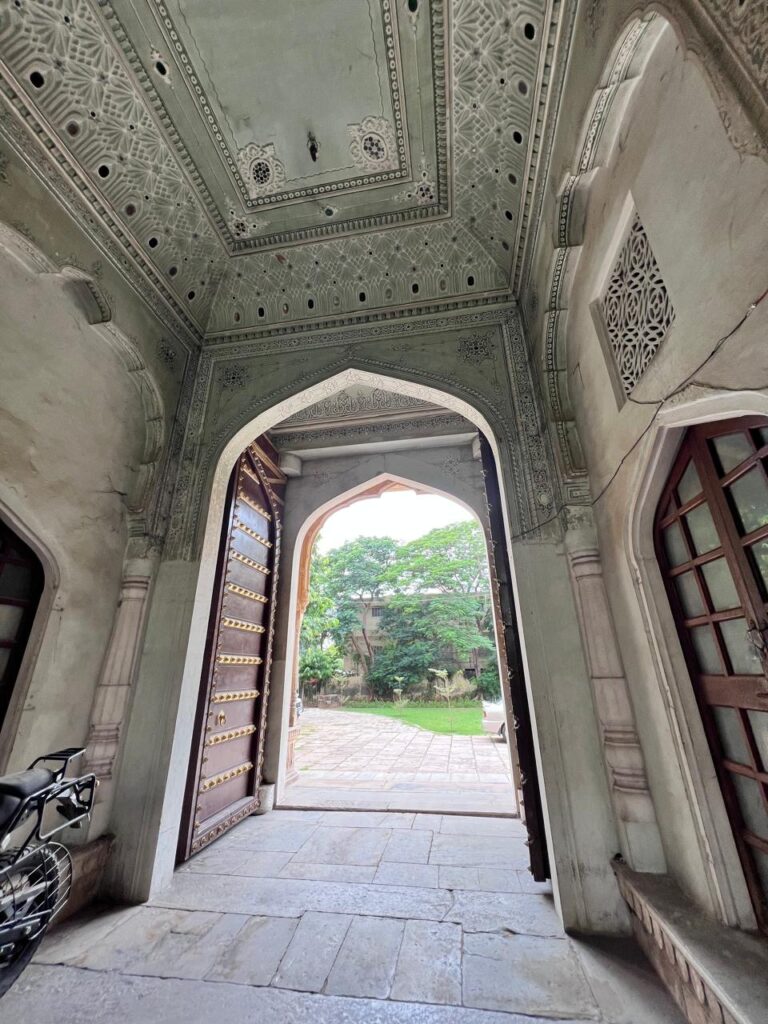
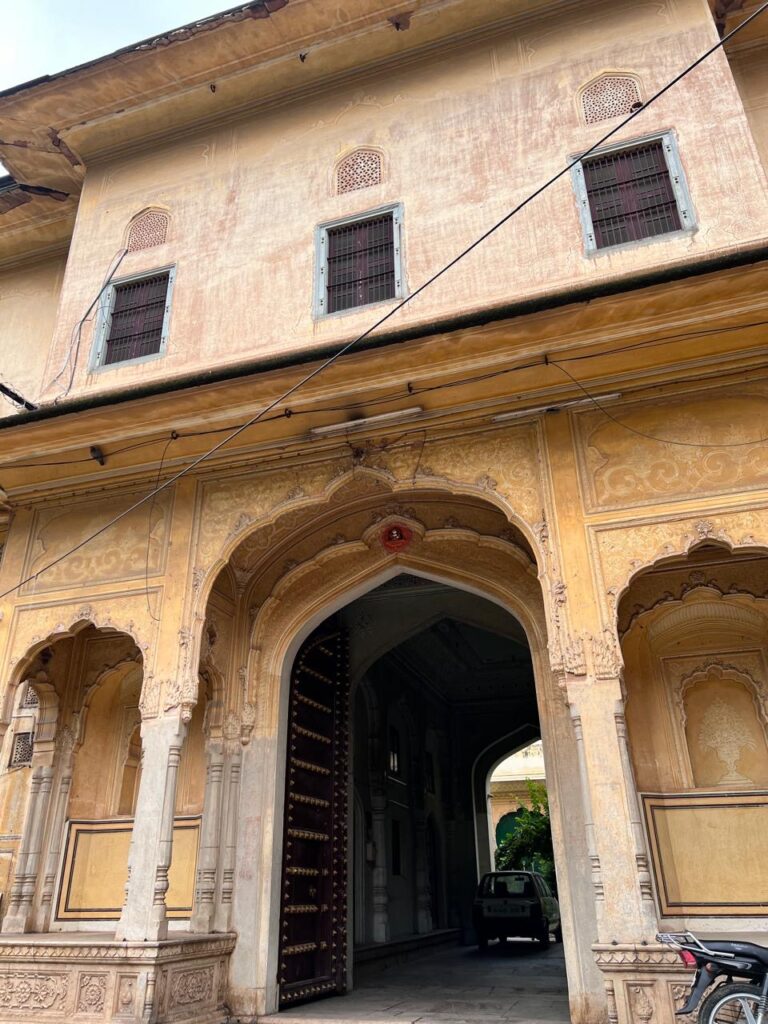


As I think about the refined craftsmanship involved in making this saree, with its body still glistening and soft after all these years, I cannot escape the growing presence of mass-produced imitations. Today, we often encounter synthetic versions of artisanal goods, drawn from various regional crafts, manufactured quickly and cheaply for convenience and consumption. Placing this saree beside those objects prompts a kind of reckoning. It reminds us that we need materials from the past not only for nostalgia, but to help us measure what surrounds us. They allow us to ask difficult questions—about value, intention, and the pace of our progress. Even if we are moving forward in some directions, might we be regressing in others?
This saree is dual toned, as was Tapati’s life – one meant to reflect a glorious existence, yet when looked at the same life from another angle, a painful story awaits.
